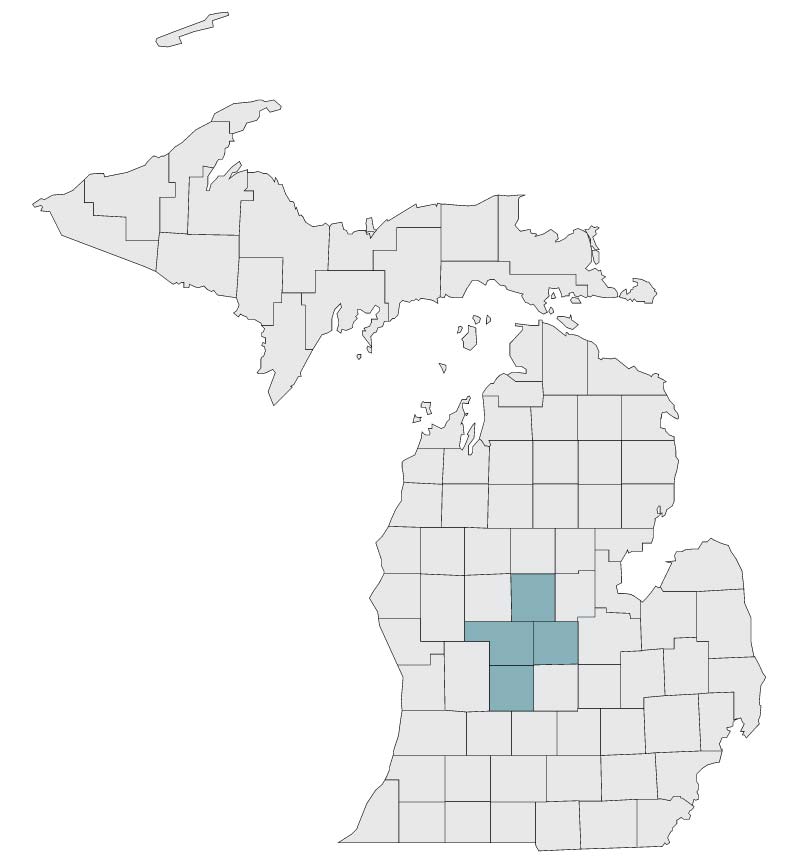Along Michigan’s back roads, thousands of homeless children
Brenda Greenhoe finds kids living in tents. She’s found them sleeping in ball field dugouts. Last summer, she found a young couple living in an abandoned garage.
That’s her job.
Greenhoe is in charge of finding and helping homeless students in Montcalm, Ionia, Isabella and Gratiot counties – four largely rural regions in central Michigan.
Last school year, she found 1,550.
“It’s a little less obvious when you drive around rural areas, because you don’t see them,” she said. “The poverty is here, but you have to drive on some pretty rough, back roads to find it. You’ll run across people who are sleeping in their vehicle on state land or in a tent.
“I see the poverty. It’s right here in my face every day.”
A flood of desperation
Fighting poverty is an urgent priority for Michigan residents across all demographic groups, according to the Center for Michigan’s recent report, “Michigan Speaks: The Citizen’s Agenda for the 2014 Elections,” based on polling and community conversations with more than 5,500 residents across the state. It’s easy to understand why: 1.6 million Michigan residents now live in poverty.
No wonder homelessness is on the rise, notably among children. Last year, Michigan was listed as having the nation’s fourth highest increase (42 percent) in student homelessness over the past decade. There are more than 31,000 homeless students in Michigan, according to most recent state estimates.
For Greenhoe, whose territory spans 2,400 miles, finding destitute children is dispiritingly easy. The four counties where she serves as a liaison for homeless students have child poverty rates ranging from 23 to 27 percent.
One county, Isabella, has the highest poverty rate in Michigan at 32.1 percent, according to the U.S. Census Bureau. Those figures, however, are likely inflated by the number of Central Michigan University students living in the area.
Even without counting college students, Isabella County’s poverty rate of 18 percent is higher than Michigan’s statewide average of 16.3 percent and the national average of 14.9 percent. The rate among the county’s 2,143 Native Americans is 27 percent, the Census Bureau found.
Isabella is one of 32 counties in Michigan that have concentrated pockets of poverty, defined as more than 30 percent of a neighborhood’s residents living below the poverty line, a report by the Annie E. Casey Foundation’s National Kids Count Project found.
Only six states had more areas of concentrated poverty than Michigan, the report found, with child poverty skyrocketing 57 percent between 2000 to 2010. The 341,000 Michigan children living in these destitute areas are enough to fill every first-, second- and third-grade classroom in the state.
Low income, low expectations
Even rural counties, where low-income families are typically scattered, have pockets of poverty, including Alpena, Chippewa, Roscommon and Isabella. That matters because children growing up in low-income areas see little hope for success, said Jane Zehnder-Merrell, Kids Count project director at the Michigan League for Public Policy.
“Children from poor neighborhoods, even if their own families are not in poverty, are affected,” she said. “They struggle more with behavior and emotional problems, they are less likely to graduate, and they have reduced potential to be economically successful as adults.”
If all a child sees is poverty and hopelessness, the likelihood of escaping is remote.
“The poverty is here, but you have to drive on some pretty rough, back roads to find it.” – Brenda Greenhoe, who searches for homeless children in central Michigan.
“Without hope, you’re dead in the water,” said Greenhoe, whose work is supported through a federal grant. “Your priorities are based on how you were raised and where you live. It affects everybody in the community. It’s more healthy to see normal families doing normal things.”
The homeless students Greenhoe helps are often not just living in tents and abandoned garages. Under federal law, students are considered homeless if they are moving from couch to couch in one home or another, or otherwise have no stable, long-term housing. Some have run away or been kicked out of their homes.
The young couple she found in an abandoned garage last summer spent their days in a park, then returned to the garage at night. Greenhoe got them back in school and helped them find safer housing.
Beyond seeing to homeless families’ physical needs, Greenhoe said her greatest challenge is helping “children see and believe that they have a future and that they have hope and to see that they can do what they believe is impossible,” Greenhoe said.
“The first question I always ask is, ‘What is your hope for the future? What are your hopes for your kids?’” she said. “I ask them that, and I get this blank stare.
“One woman burst into tears, and she said, ‘Nobody’s ever asked me that.’”
See what new members are saying about why they donated to Bridge Michigan:
- “In order for this information to be accurate and unbiased it must be underwritten by its readers, not by special interests.” - Larry S.
- “Not many other media sources report on the topics Bridge does.” - Susan B.
- “Your journalism is outstanding and rare these days.” - Mark S.
If you want to ensure the future of nonpartisan, nonprofit Michigan journalism, please become a member today. You, too, will be asked why you donated and maybe we'll feature your quote next time!


 Brenda Greenhoe works with schools in four rural Michigan counties to find homeless children and get them on track.
Brenda Greenhoe works with schools in four rural Michigan counties to find homeless children and get them on track. Montcalm, Ionia, Isabella and Gratiot counties
Montcalm, Ionia, Isabella and Gratiot counties